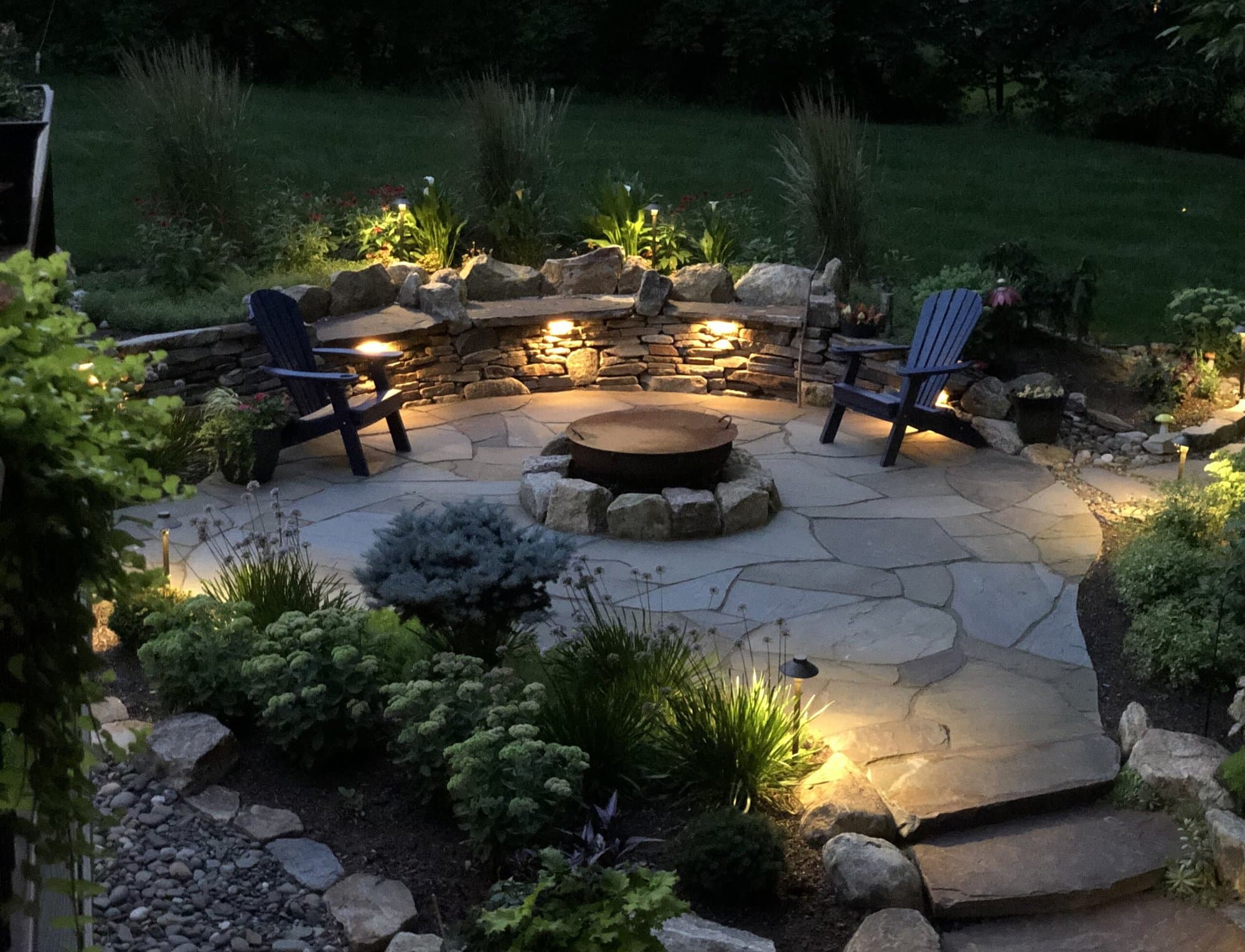Premier Landscaping Company Jacksonville: Exceptional Providers for Beautiful Gardens
Premier Landscaping Company Jacksonville: Exceptional Providers for Beautiful Gardens
Blog Article
Elevate Your Home's Aesthetic With Sustainable Landscaping Layouts and Eco-Friendly Practices

Advantages of Lasting Landscaping
Implementing sustainable landscaping practices not only saves natural sources however likewise promotes biodiversity and improves overall environmental wellness. By picking environment-friendly landscape design methods, residential property proprietors can enjoy a plethora of benefits that expand past just aesthetic appeal. One significant advantage is the reduction of water consumption via using drought-resistant plants, rainfall gardens, and efficient irrigation systems. This not only lowers energy costs however also adds to water preservation initiatives in the neighborhood.
Furthermore, sustainable landscape design can boost dirt health by decreasing the usage of chemical plant foods and pesticides, consequently developing a healthier setting for plant growth and beneficial dirt organisms. This, consequently, boosts the total resilience of the landscape to endure ecological stressors and environment adjustment effects - landscaping contractor Jacksonville. Additionally, sustainable landscaping practices can bring in varied wildlife, consisting of pollinators like bees and butterflies, cultivating a much more vibrant and well balanced ecological community within the residential property
Incorporating Indigenous Plants
To build on the benefits of sustainable landscaping, a tactical focus on integrating indigenous plants can better boost ecological resilience and promote biodiversity within the landscape. Native plants are types that normally happen in a specific location and have progressed to prosper in the neighborhood climate, dirt problems, and ecological community. By consisting of native plants in landscape design layouts, home proprietors can lower water usage, decrease the requirement for chemical pesticides and plant foods, and sustain the neighborhood wildlife population.
Incorporating native plants likewise assists in protecting the distinct character and identification of an area's plants. These plants frequently need less upkeep when established, making them a cost-effective and lasting landscape design option over time. Additionally, indigenous plants can draw in native pollinators like butterflies and bees, adding to the total health and wellness of the environment.
When choosing native plants for landscaping jobs, it is important to select varieties that are appropriate to the particular ecological problems of the site. Consulting with herb yards or regional nurseries can supply important guidance on choosing the right indigenous plants for a particular location. By integrating indigenous plants into landscape design styles, building proprietors can produce lovely, sustainable exterior spaces Get More Info that profit both the environment and the area.

Water Preservation Strategies
Reliable watering techniques play an important function in lasting landscape design practices, ensuring optimal water conservation efforts in outdoor areas. Leak watering supplies water directly to the roots of plants, decreasing evaporation and drainage.
Along with advanced watering techniques, xeriscaping is an additional water-saving landscape design strategy that concentrates on using drought-resistant plants, mulch, and efficient irrigation to create a low-water landscape design - landscaping contractor Jacksonville. By choosing native plants that are fit to the neighborhood environment and dirt problems, property owners can minimize the requirement for too much watering, ultimately preserving water and advertising a sustainable outside atmosphere
Eco-Friendly Hardscaping Concepts
Enhancing outside spaces with eco-friendly hardscaping attributes can contribute substantially to sustainable landscape design methods. When considering hardscaping elements, choose materials like recovered wood, recycled concrete, or natural stone to reduce ecological impact. These materials not only include a distinct aesthetic allure to your exterior space however also decrease the need for brand-new resources removal.
Carrying out permeable leading alternatives such as crushed rock or absorptive concrete can help in reducing water drainage and advertise groundwater recharge. These options enable rainwater to seep into the ground, avoiding erosion and lessening the worry on stormwater systems.
Integrating native plants into hardscaping styles can better boost eco-friendliness by supporting regional wild animals and reducing the requirement for extreme watering or chemical treatments. By including eco-friendly wall surfaces or upright gardens, you can present more greenery into metropolitan setups, boosting air quality and biodiversity.
Integrating energy-efficient lights, such go to these guys as solar-powered LEDs, into hardscaping styles can lower electrical power usage and reduced your residential or commercial property's carbon footprint. Prioritizing environment-friendly hardscaping concepts not only enhances the appeal of your exterior area but additionally shows a commitment to environmental stewardship.
Upkeep Tips for Lasting Landscapes
:max_bytes(150000):strip_icc()/2583801_toddd_49-1-bc209c65ca1a4917afe2f2cbc437027c.jpg)
Routinely trim plants to promote healthy and balanced development and avoid overgrowth that can lead to pest infestations or conditions. Use natural fertilizers to nurture the dirt and plants without hazardous chemicals that can leach right into the setting.
Final Thought
Finally, sustainable landscape design techniques provide numerous benefits for residential or commercial property proprietors, from enhancing the visual allure of the surroundings to promoting environmental preservation. By including native plants, executing water preservation methods, and making use of eco-friendly hardscaping ideas, property owners can develop attractive landscapes that are likewise ecologically liable. With proper upkeep, sustainable landscapes can contribute and grow to a healthier environment for both humans and wildlife.
In addition, lasting landscaping can improve soil wellness by minimizing the use of chemical fertilizers and pesticides, thus producing a much healthier setting for plant development and beneficial soil organisms.To build upon the benefits of lasting landscape design, a strategic focus on incorporating native plants can additionally boost ecological durability and advertise biodiversity within the landscape. By including native plants in landscape design designs, home owners can lower water usage, minimize the demand for chemical pesticides and fertilizers, and support the neighborhood wildlife populace.
These plants commonly require much less maintenance when established, making them a cost-efficient and sustainable landscape design service in the long run. By incorporating indigenous plants right into landscaping layouts, residential or commercial property proprietors can produce gorgeous, lasting outdoor spaces that benefit both the area and the environment.
Report this page